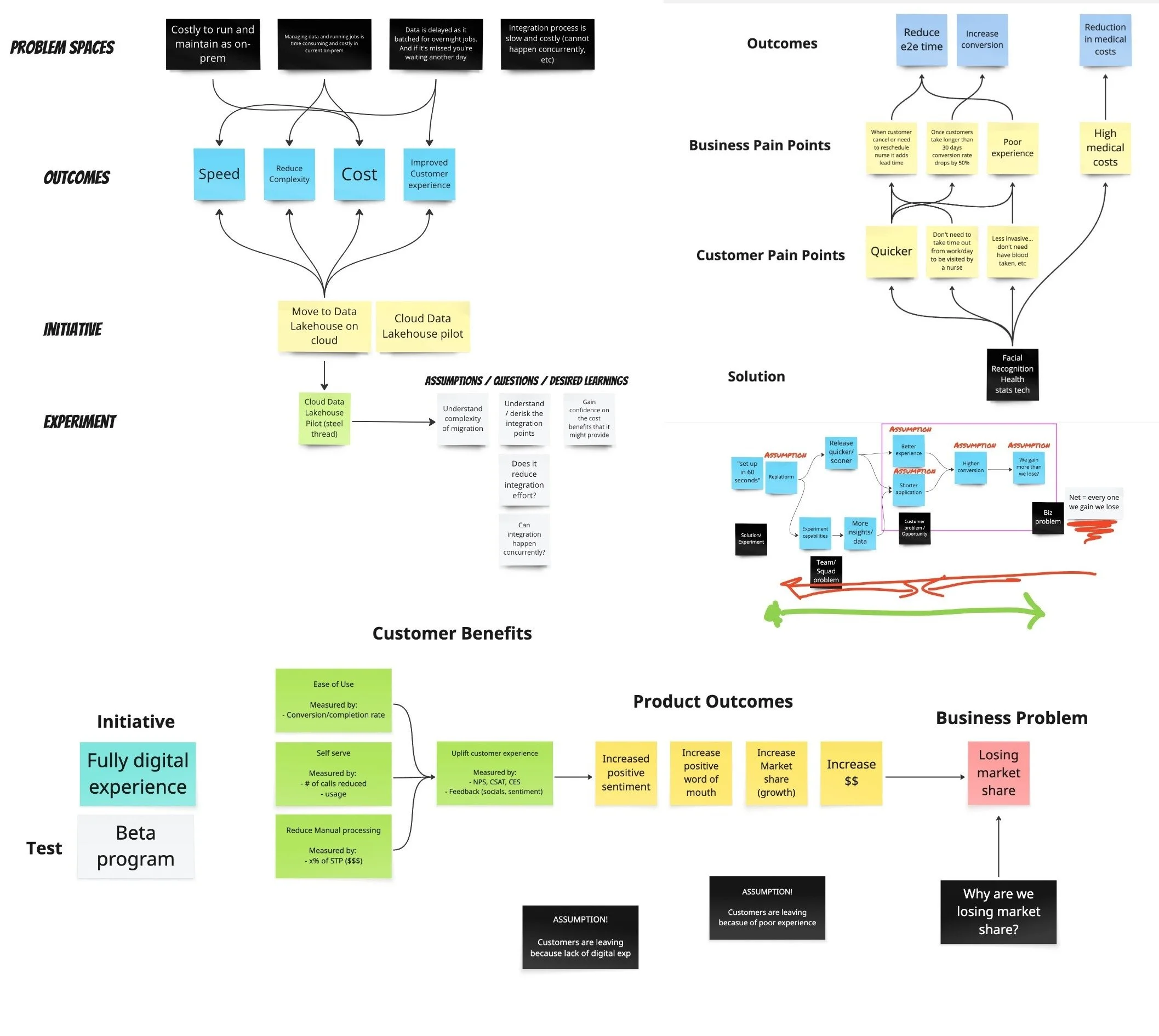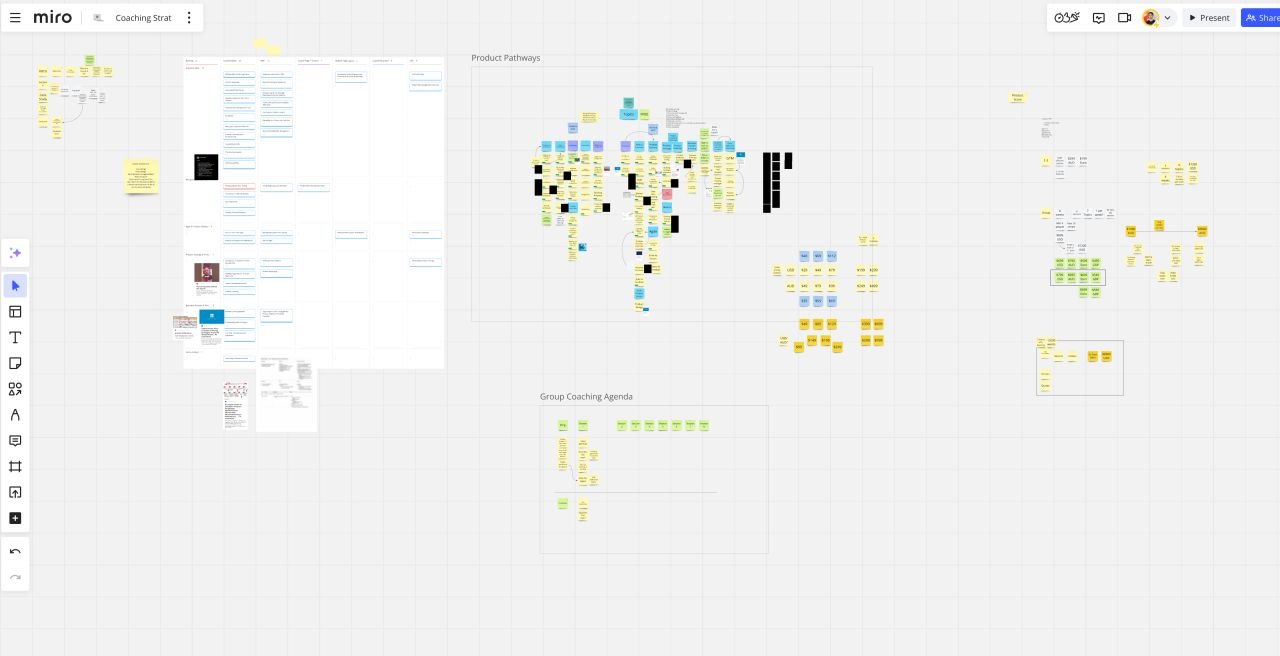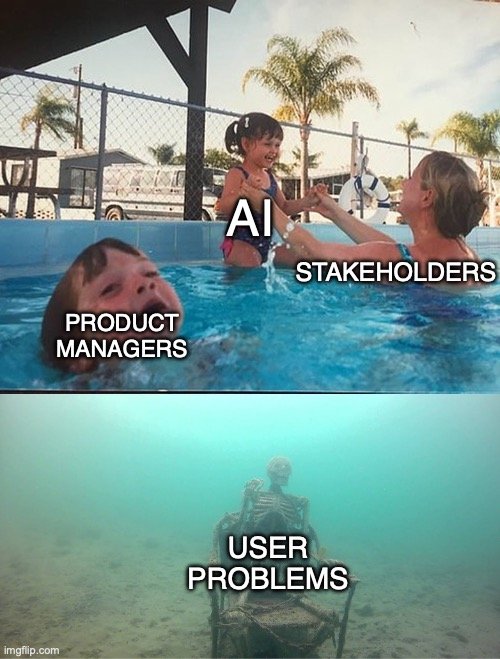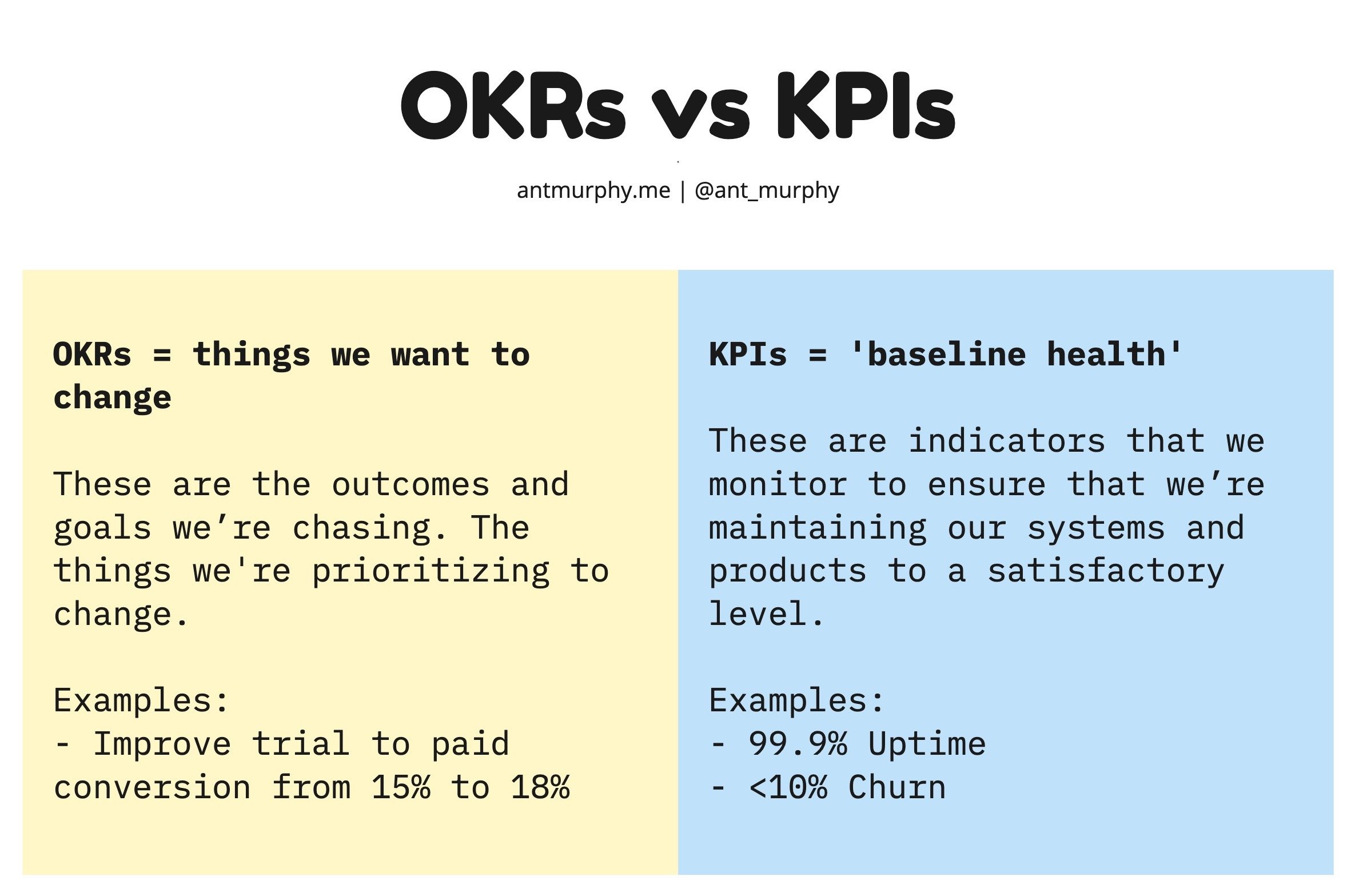8 Habits of Highly Effective Product Leaders
Hey I’m Ant and welcome to my newsletter where you will find practical lessons on building Products, Businesses and being a better Leader.
You might have missed these recent posts:
- 4 Steps to Building a Product Strategy
- 5 Steps From Features to Outcome Roadmap
- Don’t Follow Frameworks. Break them
The other week in a regular 1-on-1 coaching session a Head of Product asked;
"What are the habits of highly effective Product Leaders?"
A great question and I thought I'd share my response.
1. They're still a Product Manager
The best product leaders see their role as the same as their product manager's just with greater breadth (and a few additional responsibilities).
As Jeff Chow, CTPO of Miro frames it:
"My job is the same as that of my Product Leaders, it's just that my remit is much broader. I also collaborate with my cross-functional peers every day, I communicate visions and priorities across the org, I resolve dependencies and unblock teams. Consistent behaviour at all levels."
Thanks Dom for sharing this!
You go from owning a product to a product portfolio.
From a single product team, to a team of teams.
But the basics remain.
The best product leaders still:
Talk to customers (like Shannon Vettes see example below 😉)
Look at the data regularly
Collaborate with stakeholders
Size and prioritise opportunities
Work daily with their engineering and design peers.
Do discovery (albeit looking a bit different than as a PM (Product Manager)).
Set the direction (strategy) and constantly communicate and align the org to it.
etc..
CPO and still doing continuous discovery! 💪
There's also an undertone of leading by example here.
As I was taught at the Royal Military College, "you cannot expect anyone to do something you're not willing to do yourself!"
“To do great things, to really learn, you can’t shout suggestions from the rooftop then move on while someone else does the work. You have to get your hands dirty. You have to care about every step, lovingly craft every detail.” – Tony Fadell, Build: An Unorthodox Guide to Making Things Worth Making.
2. Your team = the product
Extending this further, effective product leaders apply their product craft to their team.
They spend time discovering:
What's working?
What's not working?
What 'jobs to be done' are the team doing?
What paint points or opportunities are the team facing?
They also test their assumptions and run experiments too.
These tests just look a bit different. Like testing new practices, tools, ways of working, etc which won't look like a typical AB or clickable-prototype test.
(p.s. when your product leader reaches out, he/she might be interviewing you, testing a hypothesis, etc you might just not realise it. I do this all the time as a coach 😉)
3. Stay close to the work
In order to be effective in 1 and 2 you need to stay close to the work.
This doesn't mean you need to know everything but you need to be close enough to:
Ask the right questions to strengthen ALL decisions, not just yours
Challenge and nudge teams in the right direction
Identify when teams might be drifting
Identify gaps and where to coach
Identify and remove blockers
I had this conversation earlier today with a CPO. She was feeling that they were on the critical path and the team were getting too distracted.
But the only way she could recognise this was by staying close. If you're miles away in an ivory tower how would you even know?
FYI if you're curious about where we landed with solving this, it was a mix of coaching, being more explicit about expectations (like XYZ aren't your role, let's find another solution and you need to be 100% focused on Z) and being there to realign, to reinforce what we're trying to achieve, why, and if anything doesn't align, it's a 'not now'.
4. Default to coaching
Another nuanced habit is defaulting to coach-mode over manager-mode.
Here's an example;
When someone says something you disagree with, what’s your instinct?
a) correct them
b) or ask "can you tell me more about..."
Effective product leaders default to b) taking a coaching and questioning stance.
That's not to say there aren't times where you need to be direct (see example above from today) but asking questions does a few things:
It unearths more context (never know some of that might be useful)
Unpacks the persons thinking - how did they land on this conclusion
Doesn’t come across as corrective/combative (be mindful of the power dynamics)
‘Teaches them to fish’
“Leadership should mean giving control rather than taking control and creating leaders rather than forging followers.” - L. David Marquet.
If this isn’t your natural style, a small habit that I've worked with product leaders on before is to try and rephrase things as questions:
Instead of “I don’t understand,” ask “Can you tell me more about…”
Instead of “This won’t work because of ABC,” ask “Have you considered ABC?”
“A bad leader will tell people what to do. A good leader will ask questions and let his or her people figure out the answers. A great leader asks the questions that focus the intelligence of their team on the right problems.” – Liz Wiseman, Multipliers: How the Best Leaders Make Everyone Smarter
5. Radically transparent
I talked about this more in a recent post, but in short: effective product leaders over-communicate.
They come across like an open book; are genuine, transparent and have nothing to hide.
One good example was a CPO I worked with who would share her notes from every executive meeting with her team.
A straight copy & paste. No editing nor reframing the message.
This is a great example of leading with "context over control".
Another example was a startup I worked in where every Friday we would have an all-hands and go through all details of the business.
From:
Our sales pipeline
People changes
and even how much money we had in the bank!
“Radical transparency fosters goodness in so many ways, for the same reasons that bad things are more likely to take place behind closed doors.” – Ray Dalio, Principles: Life and Work
6. Improve clarity
Taking radical transparency one step further, effective product leaders build organizational clarity.
They ensure their team are clear on:
What their role is
What they’re empowered to do vs not
Where and how to ask for things
Their career path
Values, principles, expectations
What we mean by certain terms
The vision, strategy, context
etc.
This might seem like a no-brainer but I'm sure you've had roles where expectations were fuzzy, promotions vague, or responsibilities unclear - how did that affect your performance?
Low clarity leads to waste, teams spinning their wheels, misalignment and all kinds of issues that could otherwise be avoided.
And don't underestimate the effort that this takes.
There's a lot of time spent communication, clarifying and creating things like role competency matrix's.
Leadership isn’t passive. It’s not about “delegating everything”. It’s active, shaping work through clarity.
“Control, we discovered, only works with a competent workforce that understands the organization’s purpose. Hence, as control is divested, both technical competence and organizational clarity need to be strengthened” ― L. David Marquet, Turn the Ship Around
7. Adapt their style
I also talked about this one at length in a recent newsletter post but the tldr is great product leaders don’t force others to adapt to their style, they adapt to you.
You've no doubt worked with leaders who insisted on doing things “their way.”
A common example is 1-on-1s. Some people love them, others hate them. Mandating 1-on-1s across the board might work for you but not for everyone.
Now you might say, what's wrong with that? People also need to be adaptive and resilient.
And you're right! But your job as a leader is to get the best out of your people and that requires understanding and flexing to their styles.
In fact, the Head of Product who asked the original question, shared a story about a CPO who forced their style onto him. This lead him into a downwards spiral; unmotivated, dissatisfied and rather than doing great work he was job hunting and considering quitting.
I'm not sure about you but I’d much rather have a team that’s energised and doing great work than polishing their resumes.
“The best leaders don’t know just one style of leadership—they’re skilled at several, and have the flexibility to switch between styles as the circumstances dictate.” – Daniel Goleman, Leadership That Gets Results
8. Recruitment = Top Priority
This year I've helped two clients with hiring multiple product roles and something the best product leaders do is they make recruitment a priority.
We all get the 'hiring the great people' part.
But where I see a lot of places fall short is the level of focus great recruitment takes.
A better recruitment process = more equitable and stronger process is picking the best candidates
A faster recruitment process = less likely to miss out on people getting offers from other places
A well oiled recruitment process = good first impressions. If the process is a mess, you might assume working there is too)
And this all takes effort, so a question is where does recruitment sit in your priorities?
Would you literally drop everything to prioritise it?
It sounds extreme, but that’s what great product leaders do.
A simple example is interviewing. If their calendar becomes the bottleneck you will miss out on great people, because great people don't typically stay on the market for long.
Not to mention the longer it takes you to hire someone, the more opportunity cost you incur.
(FYI if you're wondering both these clients had fantastic product leaders, they did drop everything for hiring. For 2 weeks it became their top priority and as a result we got some really good people in!)
Final point
I wish it was all about 'Product Sense' and building the world's best product strategy but it's just not.
Notice I didn’t list product strategy as a habit above (it's also not really a habit).
Having the world's best strategy, or tier 1 product sense, means nothing if you're can't get the best out of your team to execute on it.
So perhaps all this could be summed up to asking yourself:
“how do I get the most out of my team?”
If you obsess over that question (okay, maybe not obsess, but you get the point), you’ll naturally build many of these habits.
Because at the end of the day, that’s what product leadership is about
Getting the most of your team.
Doing so compounds faster than any single activity you can do.
“For product leaders, the product team is the product. Leadership is about recognizing that there’s greatness in everyone, and your job is to create an environment where that greatness can emerge.” – Marty Cagan, Empowered
-Ant
p.s. I know I probably missed some - let me know if you think of any - but this is what was top of mind.
For those new here… Hi 👋 I’m Ant, a Product Coach based in Sydney but work with clients all over the world.
My day job is working with companies to transform to the product model. My evening job is creating content and helping individual product managers and founders ship better products through the Product Mentorship.
















Your OKRs don’t live in a vacuum.
Yet this is exactly how I see many organizations treat their OKRs.
They jump on the bandwagon and create OKRs void of any context.
Here’s what I see all the time…